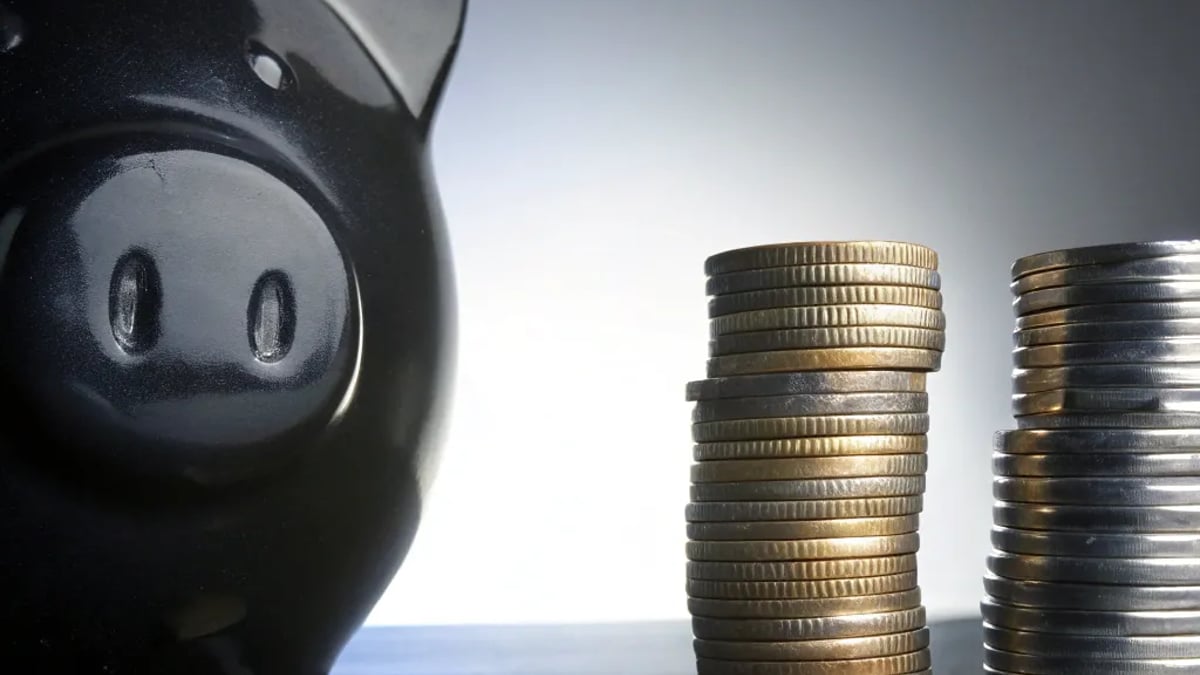
With inflation pressures and rising costs of living, finding effective ways to save money quickly has become more crucial than ever. Whether you're building an emergency fund, saving for a major purchase, or just trying to improve your financial health, these practical strategies can help you reach your savings goals faster in 2025.
Understanding Your Current Financial Situation
Before diving into specific money-saving tactics, you need a clear picture of where your money goes. This foundation will make all your savings efforts more effective.
Track Every Expense
The cornerstone of any successful savings plan is knowing exactly where your money goes. According to NerdWallet's 2025 financial behavior study, people who track expenses save an average of 17% more than those who don't.

Start by reviewing your last three months of bank and credit card statements. You might be shocked to discover how much you're spending on subscription services or takeout meals. I recently did this exercise myself and found I was spending nearly $200 monthly on subscriptions I barely used!
Several tracking methods work well:
- Budgeting apps like Mint or YNAB
- A simple spreadsheet
- The old-school envelope system
The method matters less than the consistency of tracking.
Create a Realistic Budget That Actually Works
Many budgets fail because they're too restrictive. Instead of creating an impossible-to-follow plan, try the 50/30/20 approach:
- 50% for needs (housing, food, utilities)
- 30% for wants (entertainment, dining out)
- 20% for savings and debt repayment
"The best budget is one you'll actually stick with," says financial educator Morgan Harris. "Perfect is the enemy of good when it comes to personal finance."

Quick-Win Savings Strategies
These tactics can help you see immediate results in your savings efforts.
1. Implement the 24-Hour Rule for Purchases
When tempted by a non-essential purchase, wait 24 hours before buying. This cooling-off period eliminates impulse buys that drain your bank account.
A study by the Financial Planning Association found this simple technique reduced discretionary spending by up to 30% among participants. I've personally saved hundreds by forcing myself to sleep on purchasing decisions.
2. Audit and Cancel Unused Subscriptions
The subscription economy has exploded, and most of us are paying for services we rarely use. Take an hour to review all your recurring payments:
- Streaming services
- App subscriptions
- Gym memberships
- Magazine subscriptions
- Software licenses
Be ruthless about canceling what you don't regularly use. Services like Truebill or Rocket Money can help identify and cancel subscriptions automatically.
3. Renegotiate Bills and Services
Most people don't realize how negotiable many monthly bills actually are. According to consumer savings platform Trim, over 70% of people who ask for better rates on services actually receive them.
Call these service providers and ask for better rates:
- Cable/internet provider
- Cell phone plan
- Insurance policies
- Credit card interest rates
- Gym memberships
Script: "I've been a loyal customer for X years, but I'm reviewing my budget. Can you offer me a better rate or promotion?"
4. Use Cash for Discretionary Spending
Studies consistently show that people spend 12-18% more when using credit cards versus cash. The physical act of handing over money creates psychological friction that helps limit spending.
Try withdrawing a set amount of cash each week for discretionary expenses like dining out, entertainment, and shopping. When the cash is gone, you're done spending in that category until next week.
5. Embrace the 30-Day Savings Challenge
This approach combines psychology with practical action. Choose one month and commit to saving a specific amount each day:
- Day 1: Save $1
- Day 2: Save $2
- Continue through Day 30: Save $30
By the end of the month, you'll have saved $465. This creates momentum and builds the saving habit.
Strategic Money-Saving Habits
These deeper strategies require more commitment but deliver substantial long-term savings.
6. Meal Plan to Slash Food Costs
Food expenses represent one of the largest variable costs for most households. According to the USDA, the average family of four wastes nearly $1,500 in food annually.
Meal planning reduces this waste while cutting impulse purchases at the grocery store. A basic approach:
- Plan meals for the week based on what's on sale
- Create a shopping list and stick to it
- Prep ingredients in advance
- Use leftovers creatively
"When I started meal planning, my grocery bill dropped by almost 25%," says food budget expert Jamie Chen. "Plus, we actually eat healthier now."
7. Implement the 50/15/5 Rule for Major Purchases
For any purchase over $100, research at least:
- 5 product reviews
- 15 minutes of price comparison
- 50% of alternative options
This structured approach prevents buyer's remorse and ensures you're getting the best value. I recently saved $230 on a new laptop by following this exact method.
8. Automate Your Savings
What happens automatically, happens consistently. Set up automatic transfers to your savings account on payday before you have a chance to spend the money.
Start with whatever percentage feels comfortable—even 1% makes a difference—then gradually increase it. Many employers allow you to split your direct deposit between accounts, making this even easier.
9. Adopt the Cash Envelope System
This old-school method remains effective in the digital age. Create envelopes for different spending categories (groceries, entertainment, gas), fill them with cash at the beginning of the month, and only spend what's in each envelope.
Financial advisor Dave Ramsey has long advocated this approach, and research from the Journal of Consumer Research supports its effectiveness, showing it increases awareness of spending and reduces overall expenditures.
How Can I Save Money When I'm Already Living Paycheck to Paycheck?
This is perhaps the most common question I hear, and it deserves a thoughtful answer. When finances are tight, traditional advice to "just save more" feels impossible and tone-deaf.
Start by focusing on small wins. Even saving $5-10 per week builds financial resilience over time. Consider these specific approaches for tight budgets:
10. Embrace the Gig Economy Temporarily
The gig economy offers flexible options to boost income without committing to a second job. According to a Bluehost survey, 42% of Americans now have a side hustle, with the average person earning $12,689 annually from these activities.
Options include:
- Food or package delivery
- Rideshare driving
- Online freelancing (writing, design, virtual assistance)
- Pet sitting or house sitting
Even dedicating 5-10 hours weekly can generate $100-300 in extra income that can go straight to savings.
11. Implement the "Save Your Change" Strategy
Several banks and apps now offer automatic savings programs that round up purchases to the nearest dollar and transfer the difference to savings. Over time, these micro-savings add up substantially.
Popular options include:
- Acorns
- Chime
- Bank of America's Keep the Change
- Qapital
One user reported saving over $1,800 in a year without noticing the impact on daily finances.
12. Leverage Cash-Back Apps and Credit Cards
Make your necessary spending work harder by using cash-back tools:
- Apps like Ibotta, Rakuten, and Fetch Rewards
- Cash-back credit cards (if you pay the balance in full)
- Store loyalty programs
The key is to only use these for purchases you'd make anyway—not as an excuse to spend more.
13. Practice "No-Spend" Days or Weekends
Challenge yourself to periods where you spend absolutely nothing. This builds awareness of how often we spend mindlessly and helps identify true needs versus wants.
Start with one day per week, then expand to an occasional no-spend weekend. Some ambitious savers even attempt no-spend months for non-essential purchases.
14. Reduce Housing Costs (Your Biggest Expense)
Housing typically consumes 30-40% of most budgets. Finding ways to reduce this expense creates the biggest impact on your savings rate.
Consider options like:
- Renting out a spare room
- House hacking (buying a duplex and renting half)
- Negotiating rent (especially in soft rental markets)
- Refinancing your mortgage if rates are favorable
Even temporarily downsizing can dramatically accelerate savings goals.
15. Adopt the 1% Better Approach
Instead of drastic changes, focus on improving your savings rate by just 1% each month. This gradual approach is sustainable and compounds over time.
If you currently save nothing, start by saving 1% of your income. Next month, increase to 2%, and so on. Within a year, you'll reach a 12% savings rate—better than the national average.
Building Long-Term Financial Resilience
Remember that saving money is ultimately about creating security and options in your life. Each dollar saved represents future freedom and reduced stress.
As you implement these strategies, track your progress. Celebrate small wins and adjust your approach as needed. Financial circumstances change, and flexibility is key to long-term success.
The most powerful savings strategy is consistency over time. Even modest savings, when maintained for years, create significant financial security through the power of compound interest.
Disclaimer: This content is for informational purposes only and should not be considered financial advice. Always consult with a qualified financial professional before making significant financial decisions.
Tags

About Evelyn McKinley the Author
Evelyn McKinley is a seasoned investment strategist with over two decades of experience in portfolio management and sustainable investing. Her unique focus on ethical investment practices helps individuals and organizations align their financial goals with their values.
Recommended Articles
AI tool to research Home loans
Discover how AI tools are revolutionizing home loans, making it easier for buyers to find tailored mortgage options effortlessly.
Top Walking Routines for Seniors With AFib
Discover effective walking routines for seniors with AFib to improve health and wellbeing through gentle exercises tailored to individual fitness levels.
Returned Amazon Items: What Buyers Should Know
Navigate the complexities of returned items on Amazon. Learn about conditions, policies, and tips for savvy bargain shopping.
How to Find Walmart Recliner Chair Clearance Deals
Discover top tips for finding Walmart recliner chair clearance deals, maximizing savings while enjoying comfort and style in your home.
What Most People Get Wrong About Treating Dry Eyes
Explore common misconceptions about treating dry eyes. Get a comprehensive guide on effective strategies and debunk prevalent myths.




